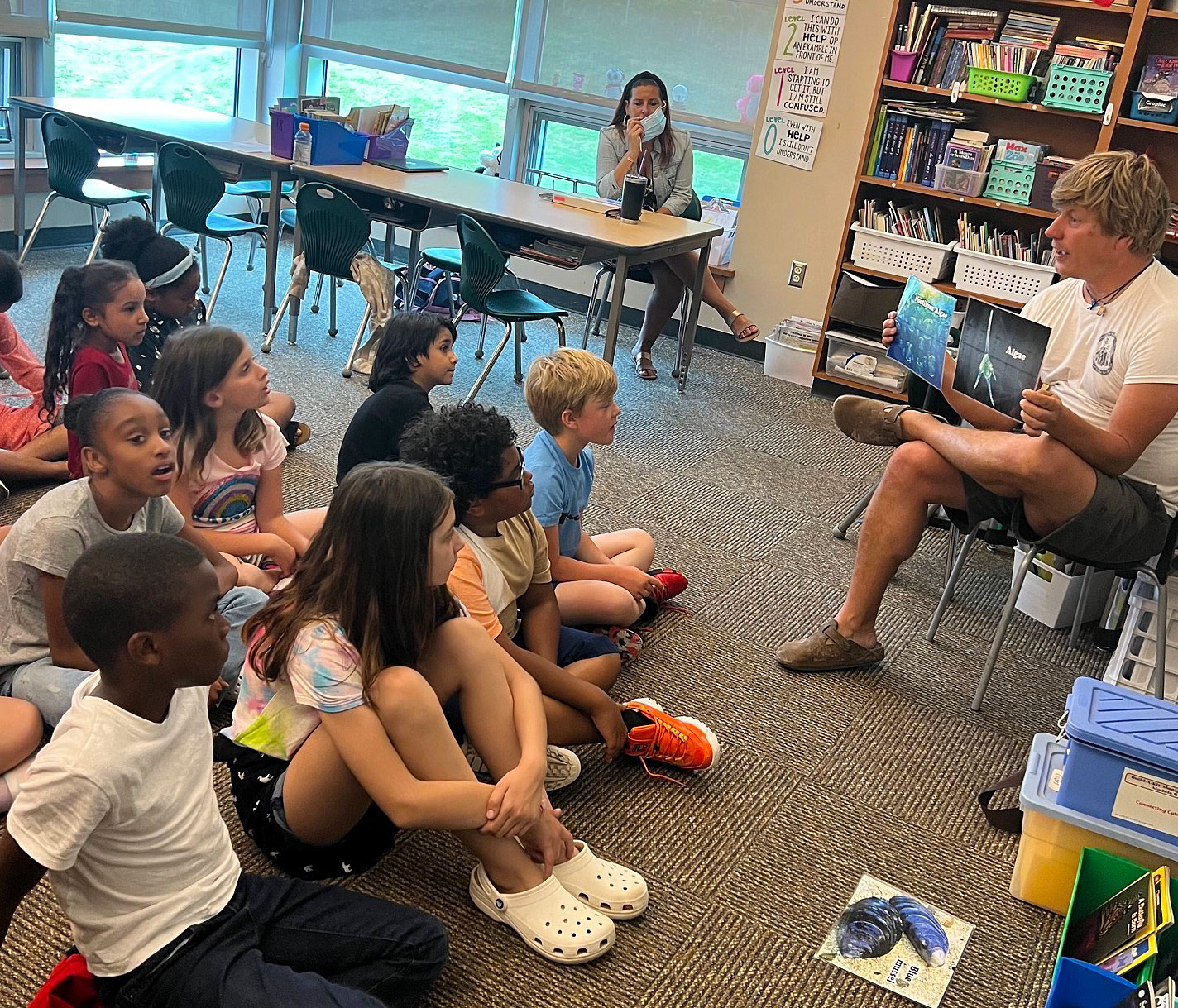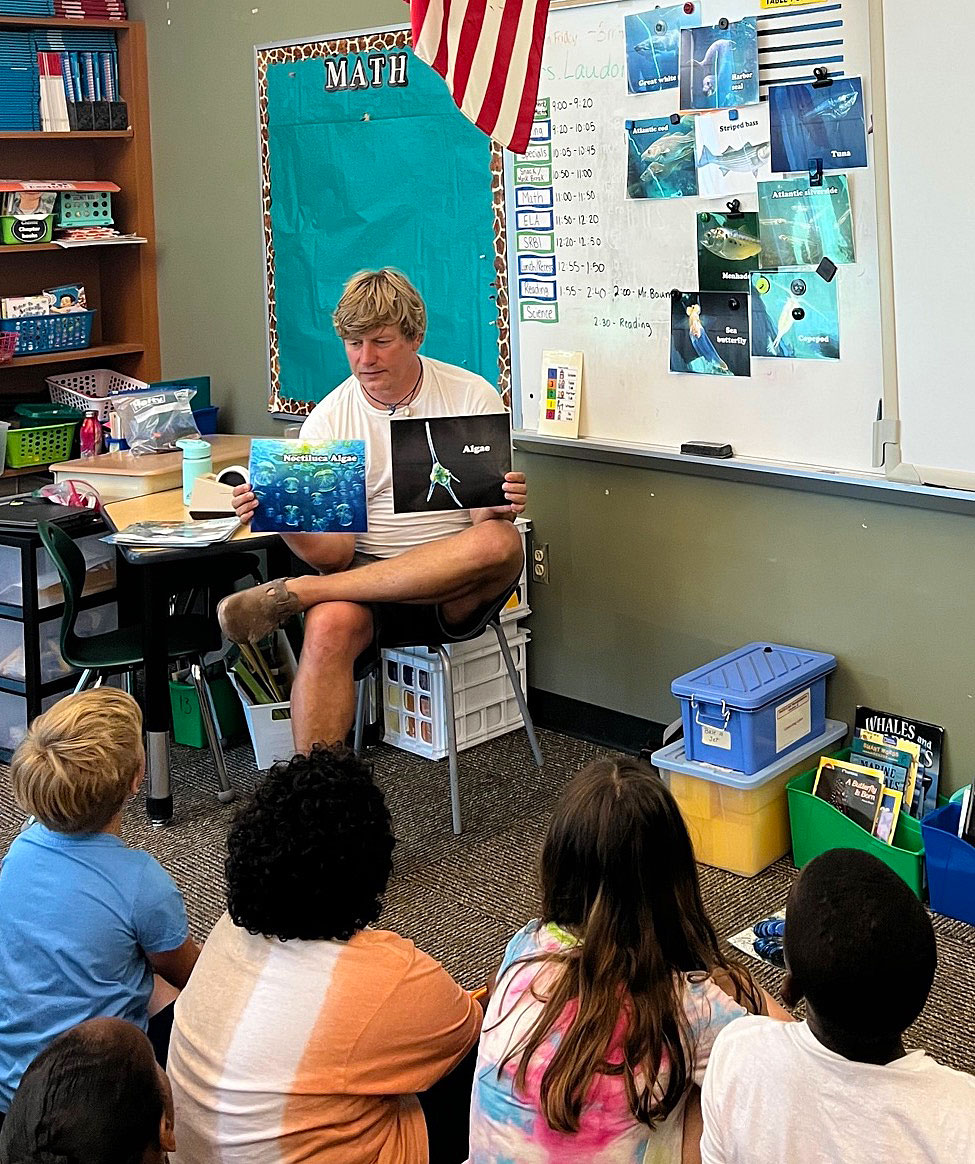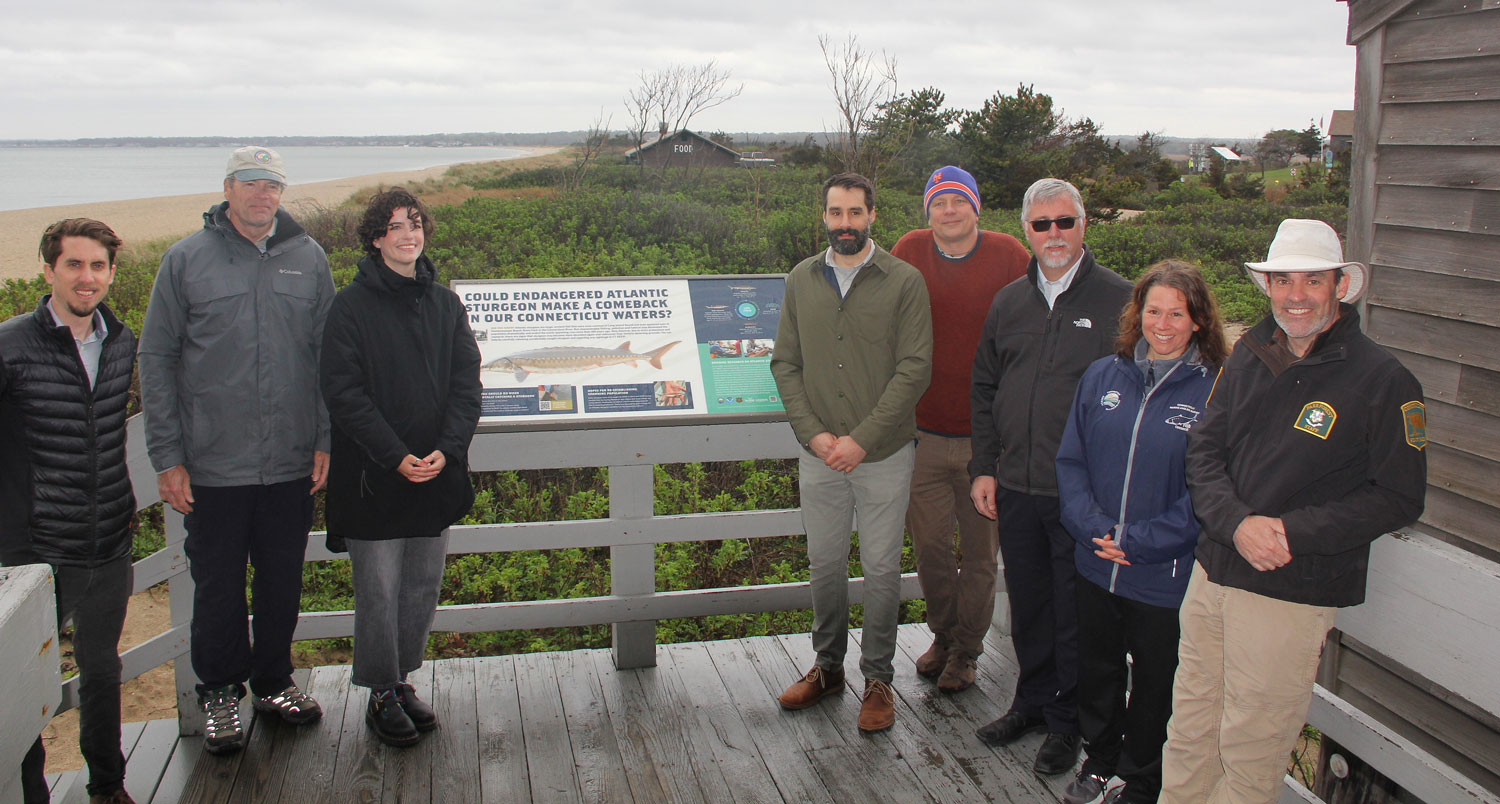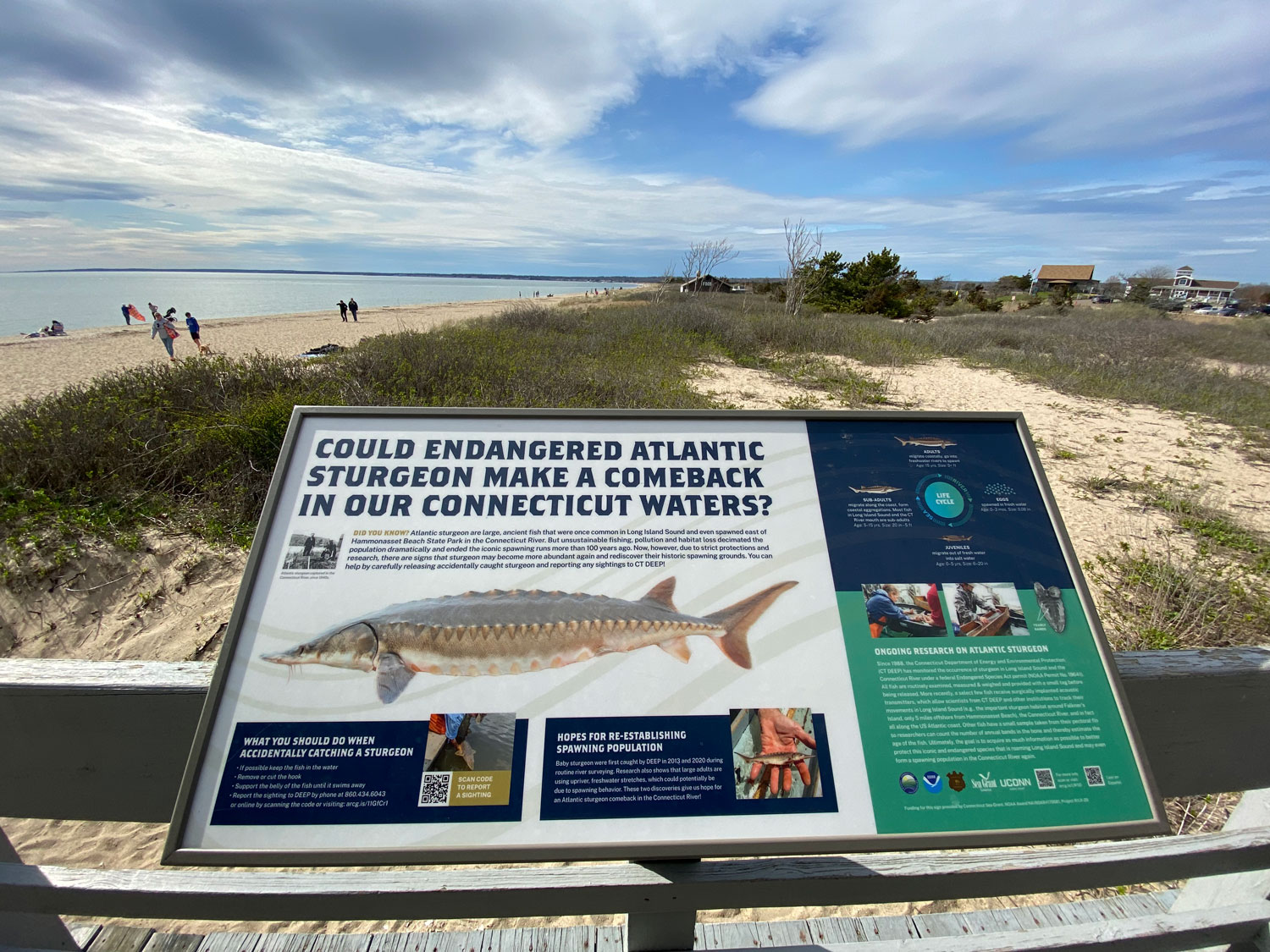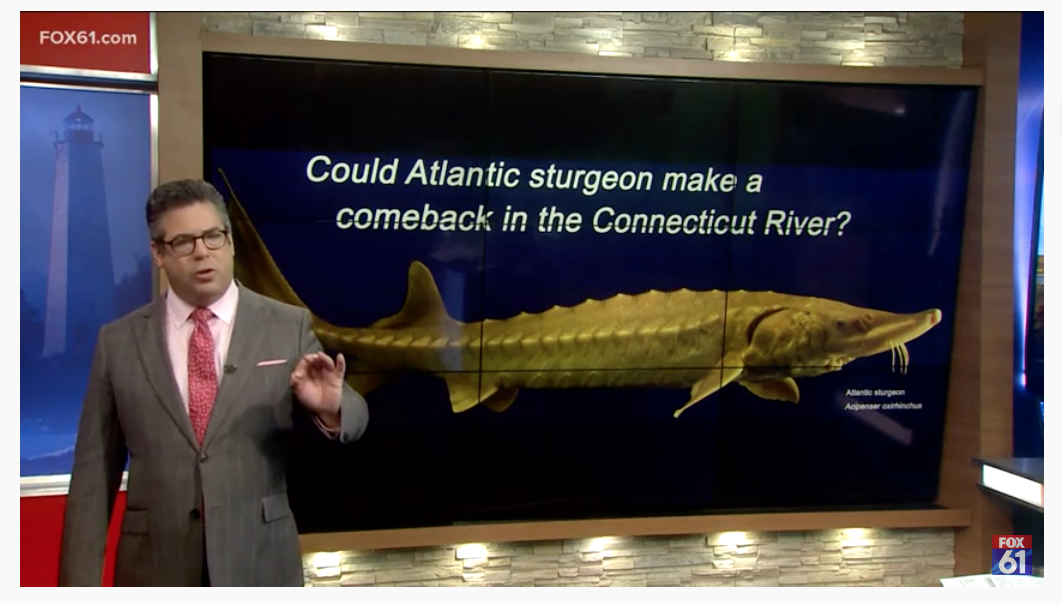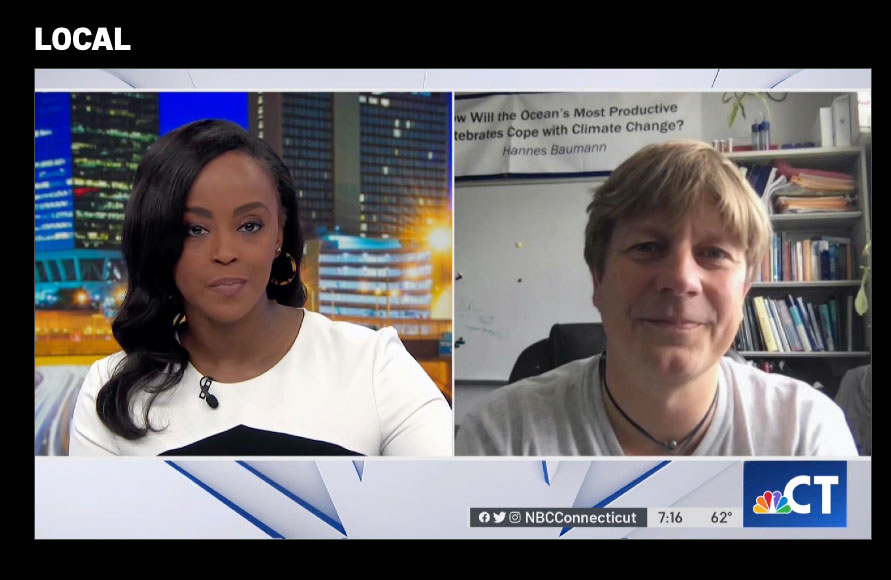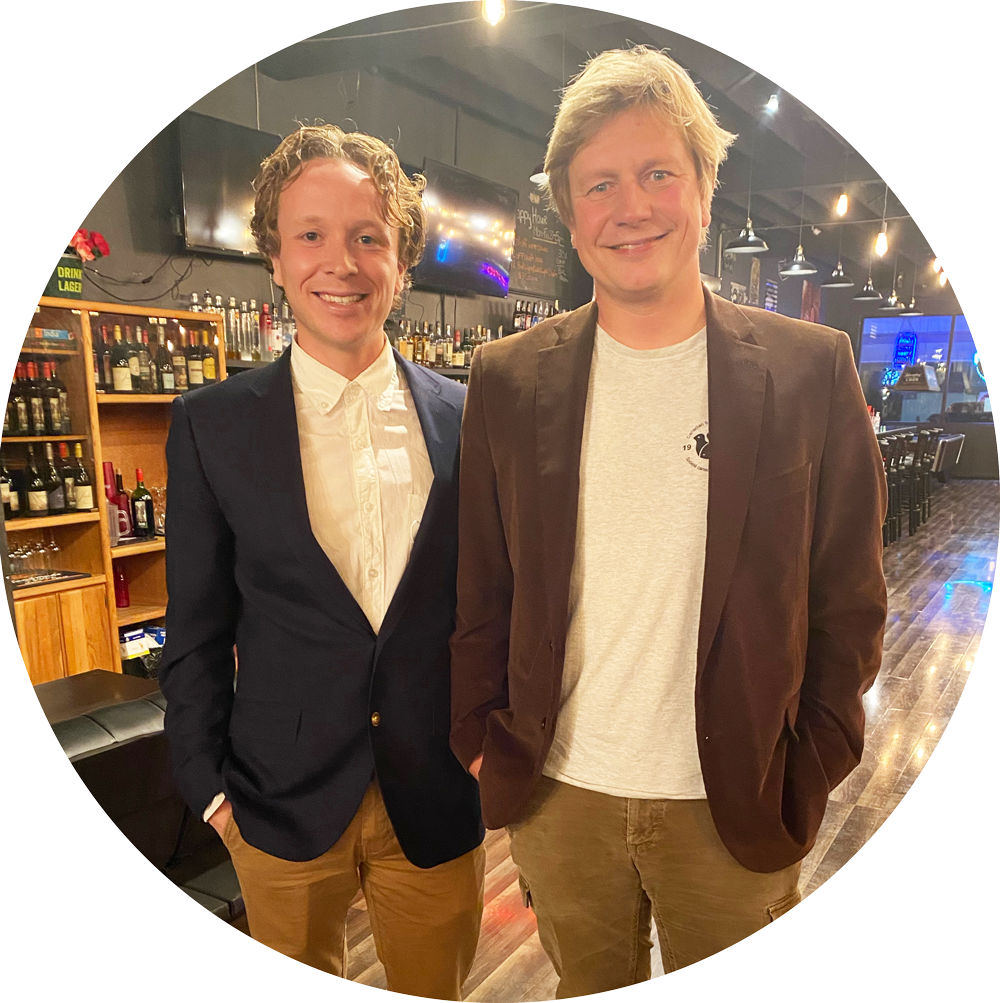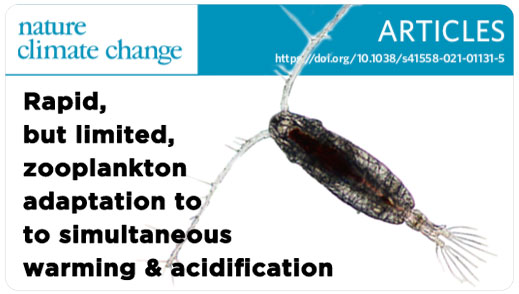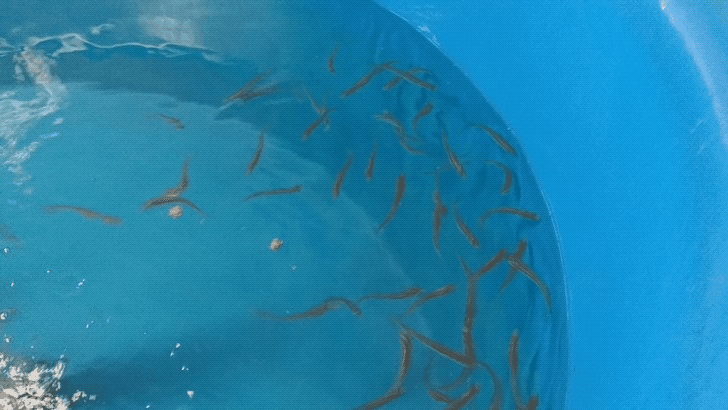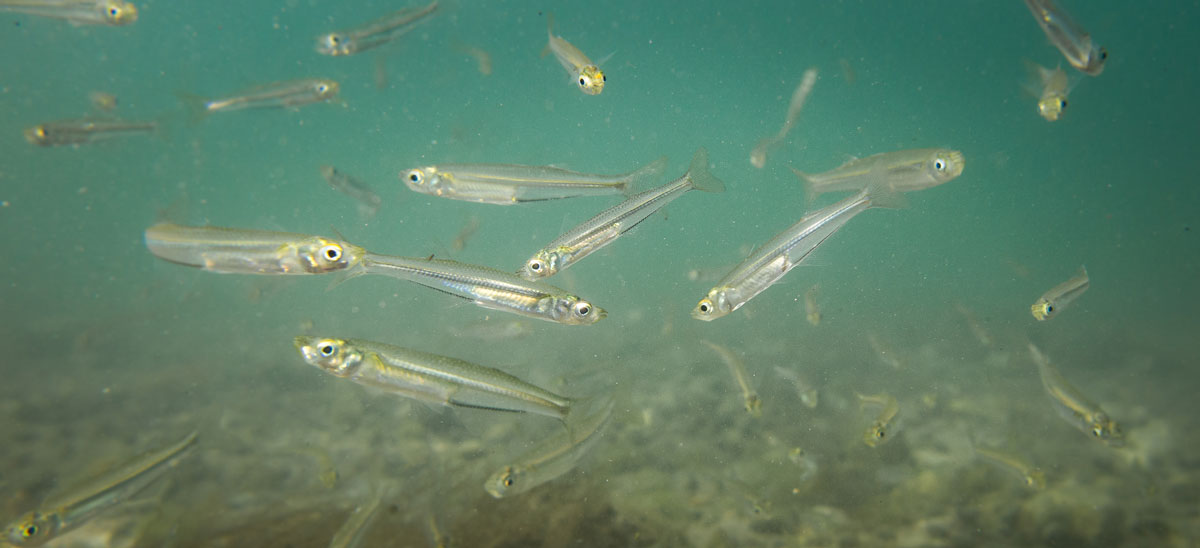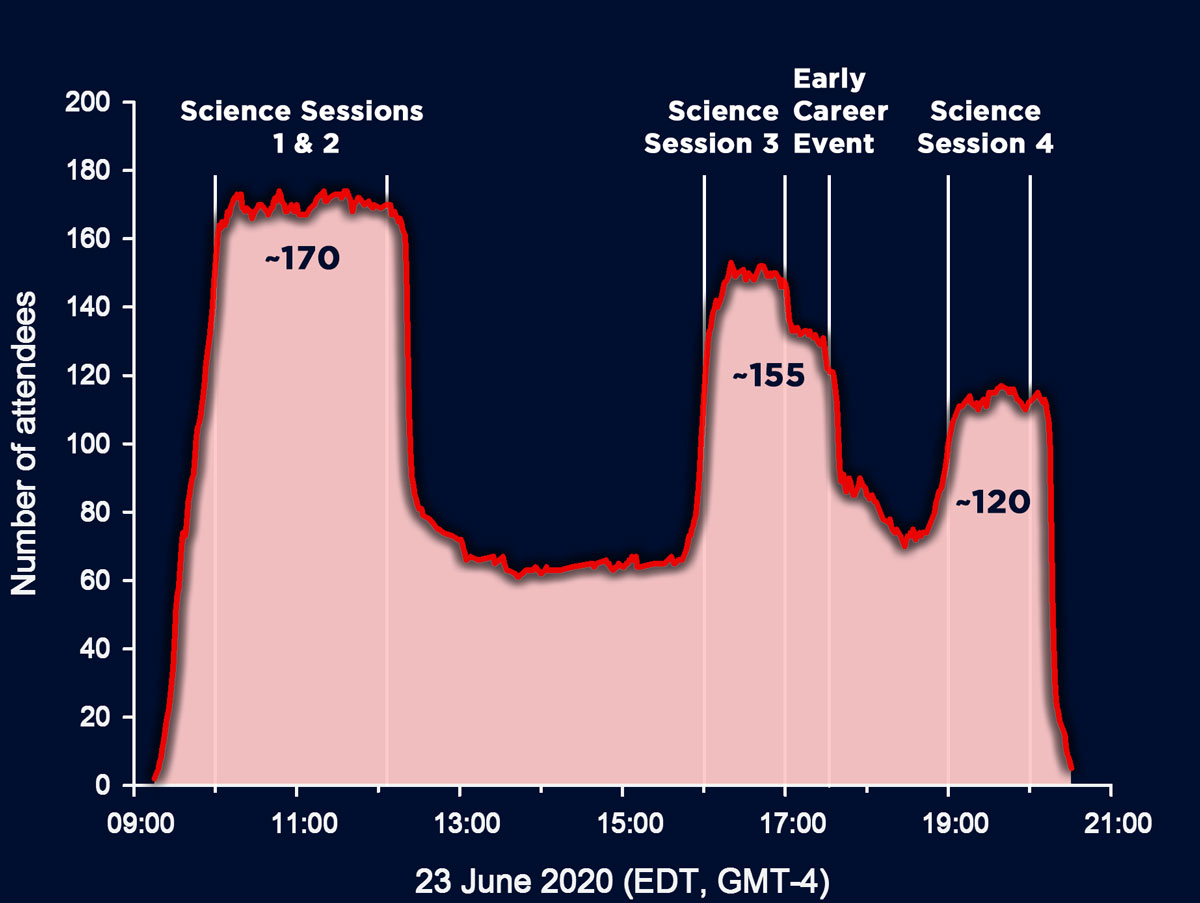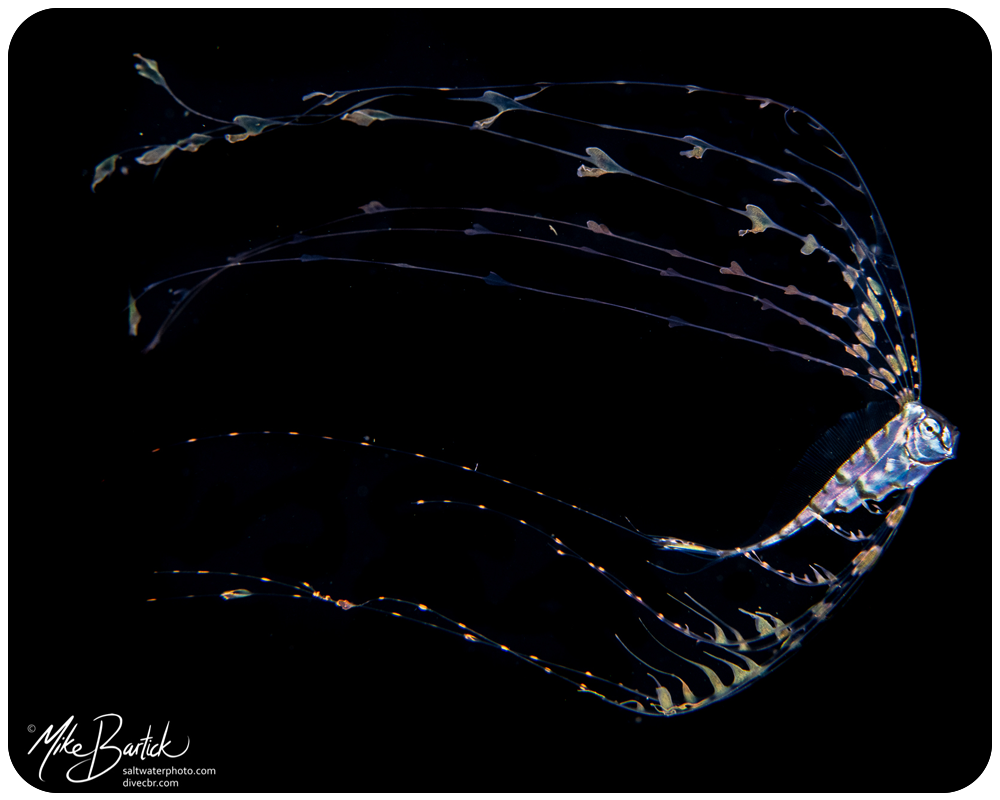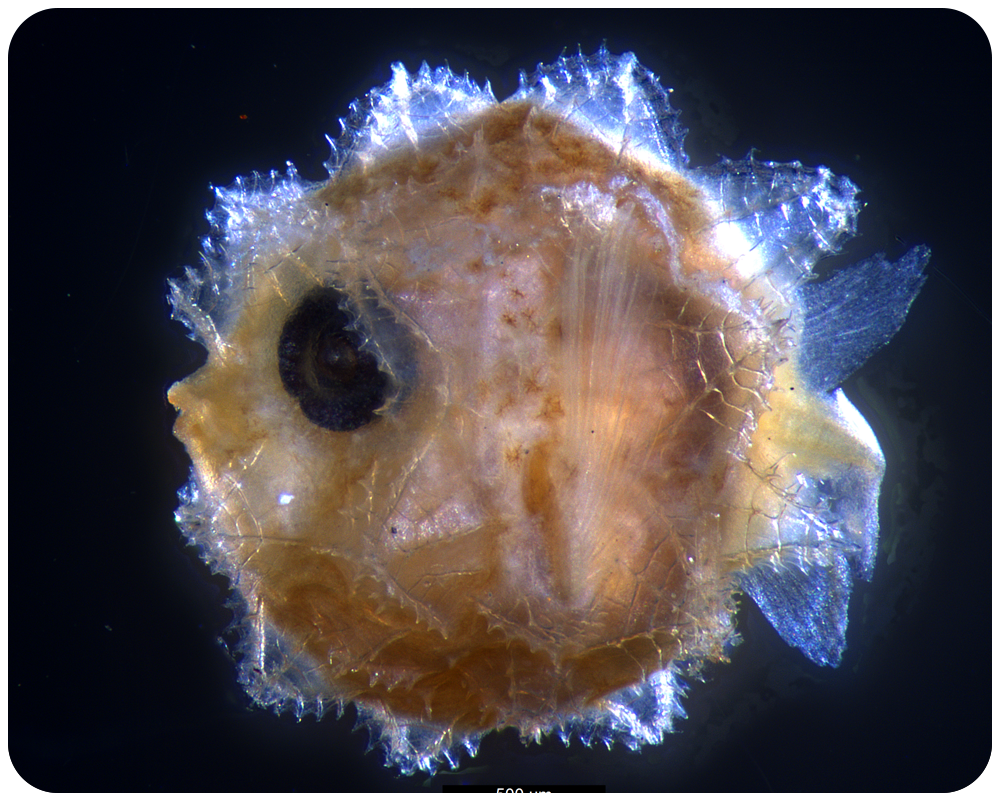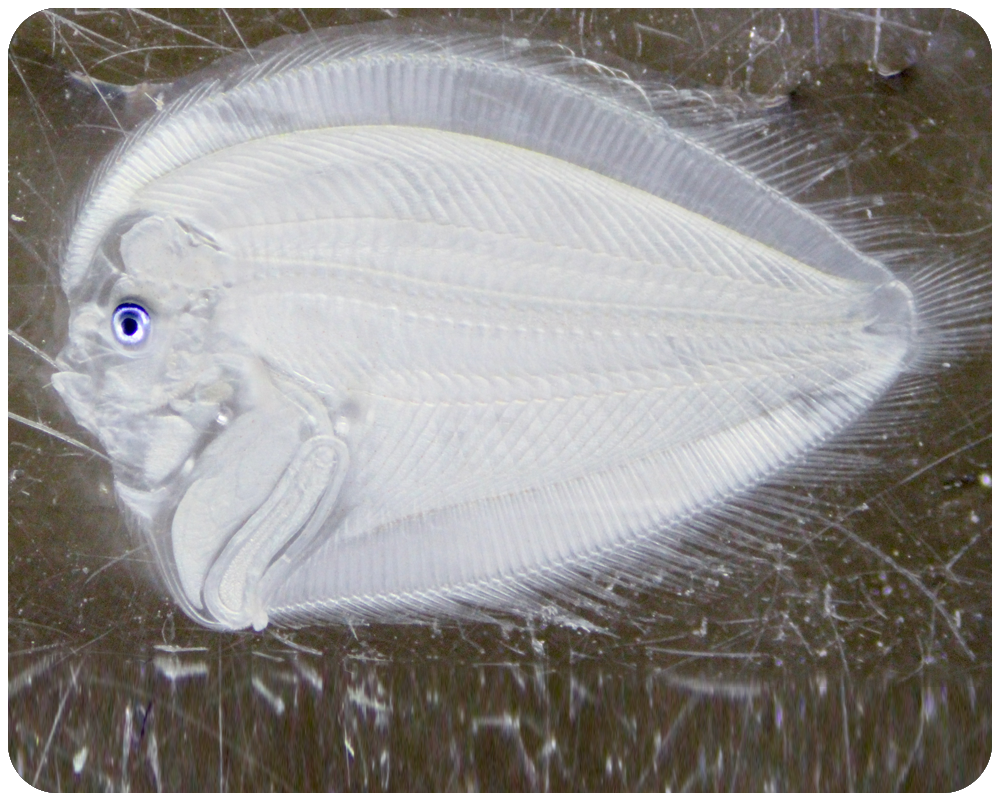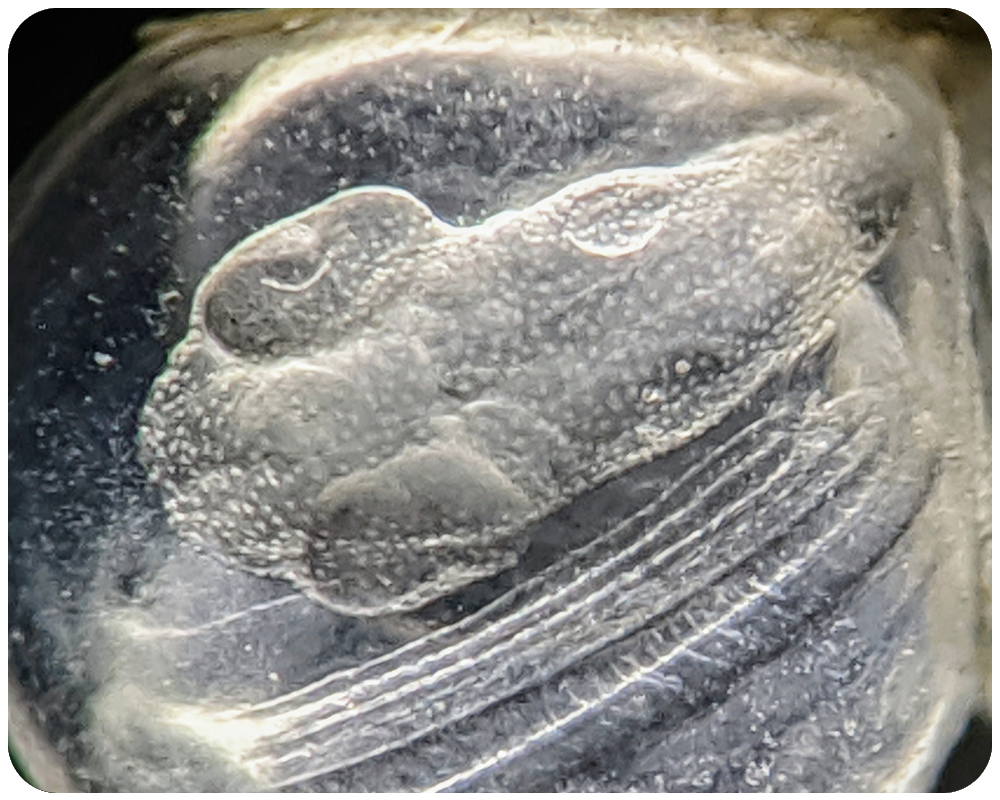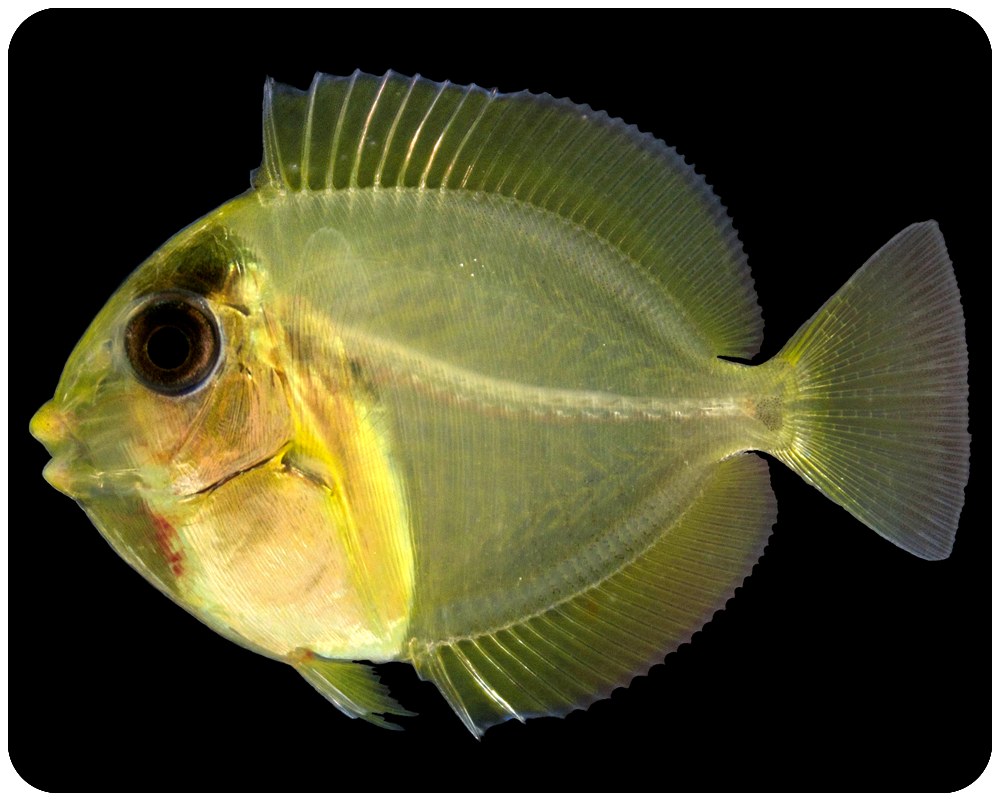7 June 2022. This is World Ocean Week and many Marine Science students and faculty do their bit to increase outreach to our community. Hannes had the privilege of dropping by the 3rd graders of the Catherine Kolnaski Magnet School, talking about what Marine Scientists do, which ocean critters eat another and "What was the weirdest fish you ever caught?" Oh, and "Are you really sure that the Megalodon [Charchardon megalodon] is no longer alive?" Thank you to Mr. Moon, Mrs. Laudone for the opportunity to come visit the school!
Publications & Presentations
Unveiling a new sturgeon outreach sign at Hammonassett State Park
MEPS just published our most recent paper on sand lance CO2-sensitivity!
Kelli Mosca presents Master thesis research on Atlantic Sturgeon
Lucas Jones presents his Masters Thesis research!
ICES Journal of Marine Science publishes long-term fecundity study!
Nature Climate Change publishes 25 generation copepod adaptation study!
Reposted from UConn Today | August 26, 2021 | By Elaina Hancock
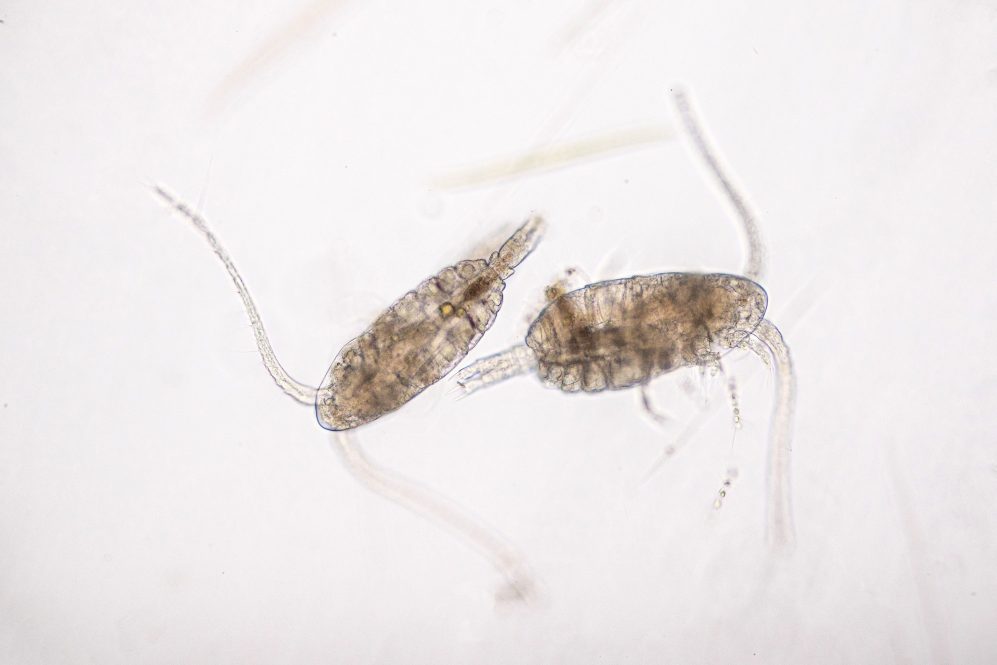
The world’s oceans are becoming increasingly stressful places for marine life, and experts are working to understand what this means for the future. From rising temperatures; to acidification as more carbon enters the waters; to changes in the currents; the challenges are multifaceted, making experiments and projections difficult.
Copepods are small marine animals that are abundant, widely dispersed, and serve as major structural components of the ocean’s food web. A team of scientists from the University of Connecticut, Jinan University in China, and the University of Vermont have found that a species of copepod called Acartia tonsa can cope with climate change, but at a price. Their research was just published in Nature Climate Change.
“We have this problem of climate change and in the ocean, it is a multi-dimensional problem because it’s not just the warming, the ocean is becoming more acidic where pH is going down as we pump more CO2, into the atmosphere. Organisms need to cope, they are under more stress, and things are happening very fast,” says Hans Dam, UConn professor of Marine Sciences.
Dam explains that previous studies suggest some animals will be more sensitive than others to changes like shifts in pH. Prior studies with copepods showed they are not particularly sensitive to pH changes, but Dam points out those studies were only done with a single generation, or few generations, to a single stressor and shows the ability to acclimate rather than adapt. This new study not only looks at adaptation across 25 generations, it also considered both ocean warming and acidification (OWA), something that few studies have done until now.
“If you want to study the long-term effects, you must consider the fact that animals will adapt to changes or stress in the environment, but to do that you have to do the right experiments. Most people do not do those experiments with animals because it takes a long time to study in multiple generations.”
The researchers looked at fitness, or the ability of a population to reproduce itself in one generation, and how fitness would change through generations in increased OWA conditions. The first generation exposed to new OWA conditions suffered extreme reductions of over 50% of population, says Dam. It was as if OWA was a big hammer that greatly reduced the population fitness. By the third generation, the population seemed to have mostly recovered. However, by the 12th generation, the researchers began to see declines once again.
Though the copepods were able to adapt, the adaptation was limited because fitness was never fully recovered, and the researchers suspect there are some antagonistic interactions at play, leading to a tug of war situation between adaptation to warming and to acidification. These antagonistic interactions complicate predicting what responses can be expected.
James deMayo, co-author and UConn Ph.D. student adds, “Perhaps what’s important to emphasize with this project is that the effects of warming combined with acidification are not the same for every generation or organism that is adapting to that environment. That’s suggested by the data and why the adaptation is limited. While within intermediate generations, organisms might be very well adapted, in later generations, the effects of warming and acidification start to behave differently on the population. That’s one of the exciting parts about the research. It’s not a static, expected result for how organisms or their populations are going to continue to grow or decay.”
For example, deMayo explains, if you took individuals in later generations that had adapted to the experimental OWA conditions and placed them into the conditions of today’s ocean, they would not fare as well.
“That’s one negative consequence, that ability to not tolerate environmental shifts is a cost and an unpredicted consequence for evolutionary adaptation in a lot of systems, not just in copepods,” says deMayo.

The researchers point out that studies looking at single stressors run the risk of making overly simplified inferences about an organism’s ability to adapt, an especially risky proposition when making conclusions about such an integral component of the food web as copepods.
“Particularly when you involve living organisms, there are complexities that you can’t predict,” says Dam. “A priori, you might make the predictions, but you have no certainty that they’re going to unfold that way. In biology these are referred to as ‘emergent properties’ or things that you cannot predict from what you know in advance and this research is a good example.”
In thinking back to the hammer comparison, Dam says impacts in the copepod population have ripple effects through the whole food web and beyond.
“If fitness decreases by say, 10%, down the road we will have a 10% decrease in population size and since these animals are the main food source for fish, a 10% decrease in the world fishery is pretty significant,” says Dam. “And this is really the best-case scenario since in the lab, they’re essentially living in hotel-like conditions so that 10% isn’t taking into consideration other factors like predation or disease. In the real world we could see fitness recovery is actually much worse.”
Additionally, Dam points out another implication is that copepods sequester CO2 and reductions in their numbers reduce the ocean’s carbon sequestration capabilities, bad news at a time when more carbon sequestration is needed.
While the research offers promise for rapid adaptation, it is a reminder that as with many things in nature there’s a catch.
“There is some welcoming news, that yes, there is a recovery of fitness but there is also sobering news that the evolutionary rescue is not complete. There’s no such thing as a free lunch,” says Dam.
44th Larval Fish Conference held virtually 24-26 June
Groton, CT 24-26 June 2021. The long awaited and anxiously prepared virtual 44th Larval Fish Conference was held, featuring more than 240 participants from 28 countries. 58 scientific talks, including 3 keynote lectures were given via Cisco’s WebEx platform, whereas networking activities such as poster presentations, ‘Meet the Speaker’ events, and Mentor hours used the innovative Gatherly platform. The technology was working out well, the preparation paid off, and delegates were overall enthusiastic about this virtual alternative, which was forced on us by Covid-19, but may have shown us new ways and concepts to broaden the societies reach and equality.
The post-conference website is housed at https://lfc44.marinesciences.uconn.edu
Special thanks go to the scientific steering committee Eric Schultz, Jacqueline Webb, and Paul Anderson. Lauren Schaller, Anne Hill, Harley Erickson, and Kate Copeland from UConn’s conference services did a great job as well preparing and running parts of the events. Support came from NOAA’s Northeast Fisheries Science Center.

[New publication] PLOS One publishes long-term silverside growth study!
27 July 2020. Big and proud congratulations to Chris Murray, who published his last big chunk of data from his PhD research on the effects of marine climate change on coastal marine fish. The publication in PLOS One synthesized 3 years of multiple, long-term experiments on Atlantic silversides (Menidia menidia) demonstrating consistent negative growth effects on high CO2 conditions. However, sometimes it takes more than just looking at means and standard deviations to elucidate these effects. Hence, in this paper, shift functions analyzing the different percentiles of distributions are employed.
Murray, C.S. and Baumann, H. (2020) Are long-term growth responses to elevated pCO2 sex-specific in fish? PLOS One 15:e0235817
The publication was featured in UConn Today “UConn Research: More Carbon in the Ocean Can Lead to Smaller Fish”
By Elaina Hancock
As humans continue to send large quantities of carbon into the atmosphere, much of that carbon is absorbed by the ocean, and UConn researchers have found high CO2 concentrations in water can make fish grow smaller.
Researchers Christopher Murray PhD ’19, now at the University of Washington, and UConn Associate Professor of Marine Sciences Hannes Baumann have published their findings in the Public Library of Science (PLoS One).
“The ocean takes up quite a bit of CO2. Estimates are that it takes up about one-third to one-half of all CO2 emissions to date,” says Murray. “It does a fantastic job of buffering the atmosphere but the consequence is ocean acidification.”
Life relies on chemical reactions and even a slight change in pH can impede the normal physiological functions of some marine organisms; therefore, the ocean’s buffering effect may be good for land-dwellers, but not so good for ocean inhabitants.
Baumann explains that in the study of ocean acidification (or OA), researchers have tended to assume fish are too mobile and tolerant of heightened CO2 levels to be adversely impacted.
“Fish are really active, robust animals with fantastic acid/base regulatory capacity,” says Murray. “So when OA was emerging as a major ocean stressor, the assumption was that fish are going to be OK, [since] they are not like bivalves or sea urchins or some of the other animals showing early sensitivities.”
The research needed for drawing such conclusions requires long-term studies that measure potential differences between test conditions. With fish, this is no easy task, says Baumann, largely due to logistical difficulties in rearing fish in laboratory settings.
“For instance, many previous experiments may not have seen the adverse effects on fish growth, because they incidentally have given fish larvae too much food. This is often done to keep these fragile little larvae alive, but the problem is that fish may eat their way out of trouble — they overcompensate – so you come away from your experiment thinking that fish growth is no different under future ocean conditions,” says Baumann.
In other words, if fish are consuming more calories because their bodies are working harder to cope with stressors like high CO2 levels, a large food ration would mask any growth deficits.
Additionally, previous studies that concluded fish are not impacted by high CO2 levels involved long-lived species of commercial interest. Baumann and Murray overcame this hurdle by using a small, shorter-lived fish called the Atlantic silverside so they could study the fish across its life cycle. They conducted several independent experiments over the course of three years. The fish were reared under controlled conditions from the moment the eggs were fertilized until they were about 4 months old to see if there were cumulative effects of living in higher CO2 conditions.
Murray explains, “We tested two CO2 levels, present-day levels and the maximum level of CO2 we would see in the ocean in 300 years under a worst-case emissions scenario. The caveat to that is that silversides spawn and develop as larvae and early juveniles in coastal systems that are prone to biochemical swings in CO2 and therefore the fish are well-adapted to these swings.”
The maximum CO2 level applied in the experiments is one aspect that makes this research novel, says Murray,
“That is another important difference between our study and other studies that focus on long-term effects; almost all studies to date have used a lower CO2 level that corresponds with predictions for the global ocean at the end of this century, while we applied this maximum level. So it is not surprising that other studies that used longer-lived animals during relatively short durations have not really found any effects. We used levels that are relevant for the environment where our experimental species actually occurs.”
Baumann and Murray hypothesized that there would be small, yet cumulative, effects to measure. They also expected fish living in sub-ideal temperatures would experience more stress related to the high CO2 concentrations and that female fish would experience the greatest growth deficits.
The researchers also used the opportunity to study if there were sex-determination impacts on the population in the varying CO2 conditions. Sex-determination in Atlantic silversides depends on temperature, but the influence of seawater pH is unknown. In some freshwater fish, low pH conditions produce more males in the population. However, they did not find any evidence of the high CO2 levels impacting sex differentiation in the population. And the growth males and females appeared to be equally affected by high CO2.
“What we found is a pretty consistent response in that if you rear these fish under ideal conditions and feed them pretty controlled amounts of food, not over-feeding them, high CO2 conditions do reduce their growth in measurable amounts,” says Murray.
They found a growth deficit of between five and ten percent, which Murray says amounts to only a few millimeters overall, but the results are consistent. The fish living at less ideal temperatures and more CO2 experienced greater reductions in growth.
Murray concludes that by addressing potential shortcomings of previous studies, the data are clear: “Previous studies have probably underestimated the effects on fish growth. What our paper is demonstrating is that indeed if you expose these fish to high CO2 for a significant part of their life cycle, there is a measurable reduction in their growth. This is the most important finding of the paper.”
This work was funded by the National Science Foundation grant number OCE #1536165. You can follow the researchers on Twitter @baumannlab1 and @CMurray187.
[Lab news] Hannes & colleagues organize a Virtual Town Hall

23 June 2020. It’s been a remarkable day. A remarkable few months of preparation. But on this Tuesday in June, more than 250 people from all over the world logged in to a UConn WebEx Event organized by Hannes Baumann, Eric Schultz, Jacqueline Webb, Paul Anderson and Jon Hare. The event, billed as the “1st Virtual Larval Fish Science Town Hall” was of course a product of the strange and challenging times we live in right now. A consequence of almost a year of painstaking preparations for the 44th Larval Fish Conference in Mystic, CT … eclipsed by the COVID-19 pandemic that made having a physical science conference impossible.
The Virtual Town Hall gave 16 speakers from around the world the opportunity to communicate their science, while providing a forum for the community to interact. The Early Career Committee of the AFS Early Life History Section contributed as well, organizing a round table discussion led by Kelsey Swieca with Chris Chambers, Jackie Webb, and Peter Konstantidinis. Individual networking meetings – although hobbled initially by technology – were held after the meeting between senior and early career researchers.
And best of all – more than 40 people participated in a picture contest, contributing stunning images of larval fish or larval fish science.
For more information, speaker bios’s, talk titles, abstracts and even some video please visit the event website lfc44.uconn.edu
Some of our personal favorites among the best larval fish picture submissions
